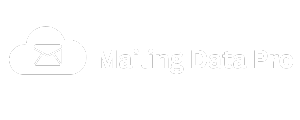Take a look at your top competitors and see who they are marketing to and what their markets are. You can use that information to determine if your market is the same, or try to find a gap in the market that you can focus on.
Once you’ve decided who your target market is going to be, you need to document that so everyone in the company will know.
Even though a target market is most often used in marketing, it’s information that sales and customer service can also use in their strategies.
Identifying your target market is a key step in the foundational development of your digital marketing strategies. After all, you need to know who to market to.
For example, if you sell mustache trimmers and beard oil, you probably aren’t marketing to women and don’t need to include them in your broad marketing strategies. Your target market is probably closer to men who are in the 30 to 60 age range.
ROCK CONTENT MAGAZINE
The target market influences all of the decisions your brand makes in marketing and even in business.
It helps you understand how your products and services benefit those who will use them and what type of approach will work best.
It helps to shape the steps involved in telemarketing list your sales and marketing efforts and what type of growth your brand should have.
Now that you understand what a target market is, let’s turn our attention to a target audience.
A target audience is a segment of your target market that you want to view specific marketing messages and advertisements.
In fact, target audiences are most commonly used in advertising when you need to narrow down and get specific about the people who want to advertise to.
How to Identify a Target Audience
Identifying a target audience works differently than your target market.
While a target market is a broad group that is essential for all of your business decisions, a target audience isn’t as essential to the growth of your brand.
You probably will have many target Mailing Data Pro audiences for different campaigns, and can create them using the following steps.
Rather than starting from scratch, you have a target market to look at when creating a target audience.
Examine your current customer base and see where there is room to break that market down into different segments based on demographic or behavioral traits.

